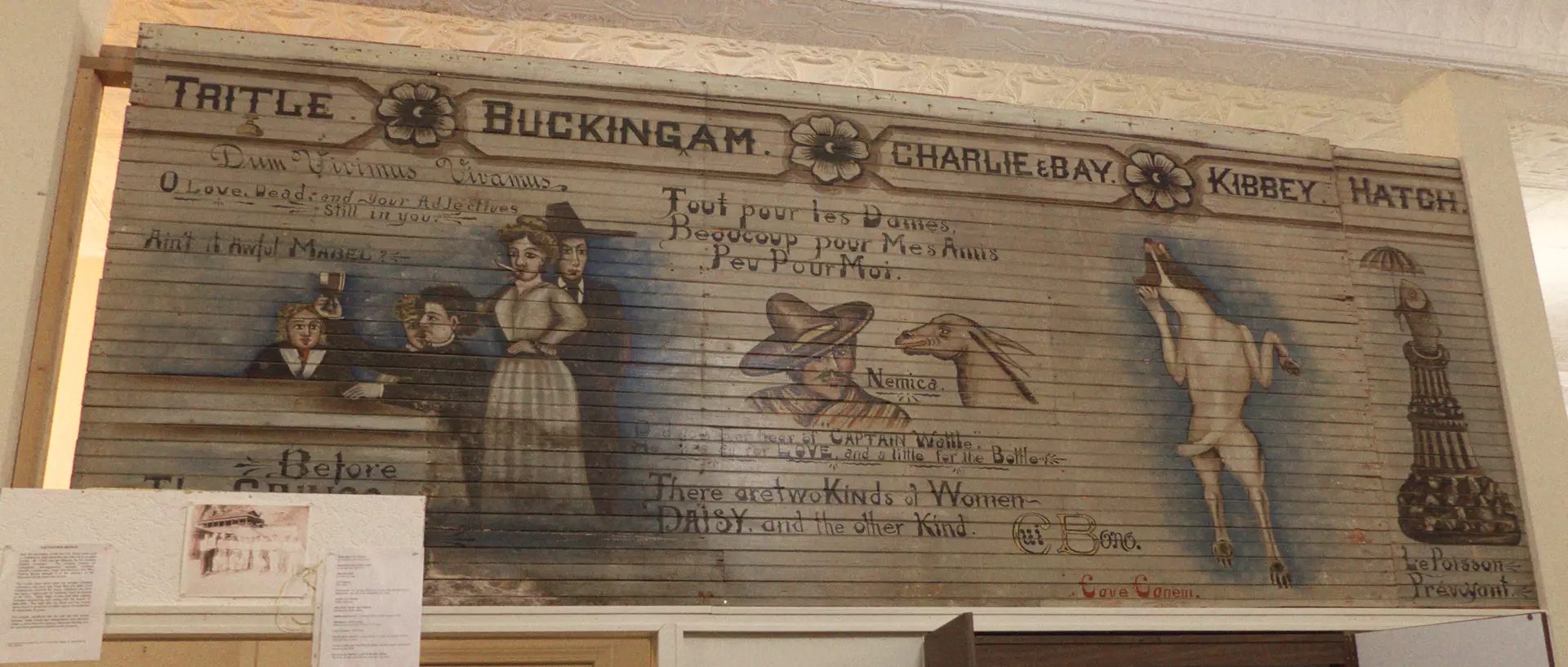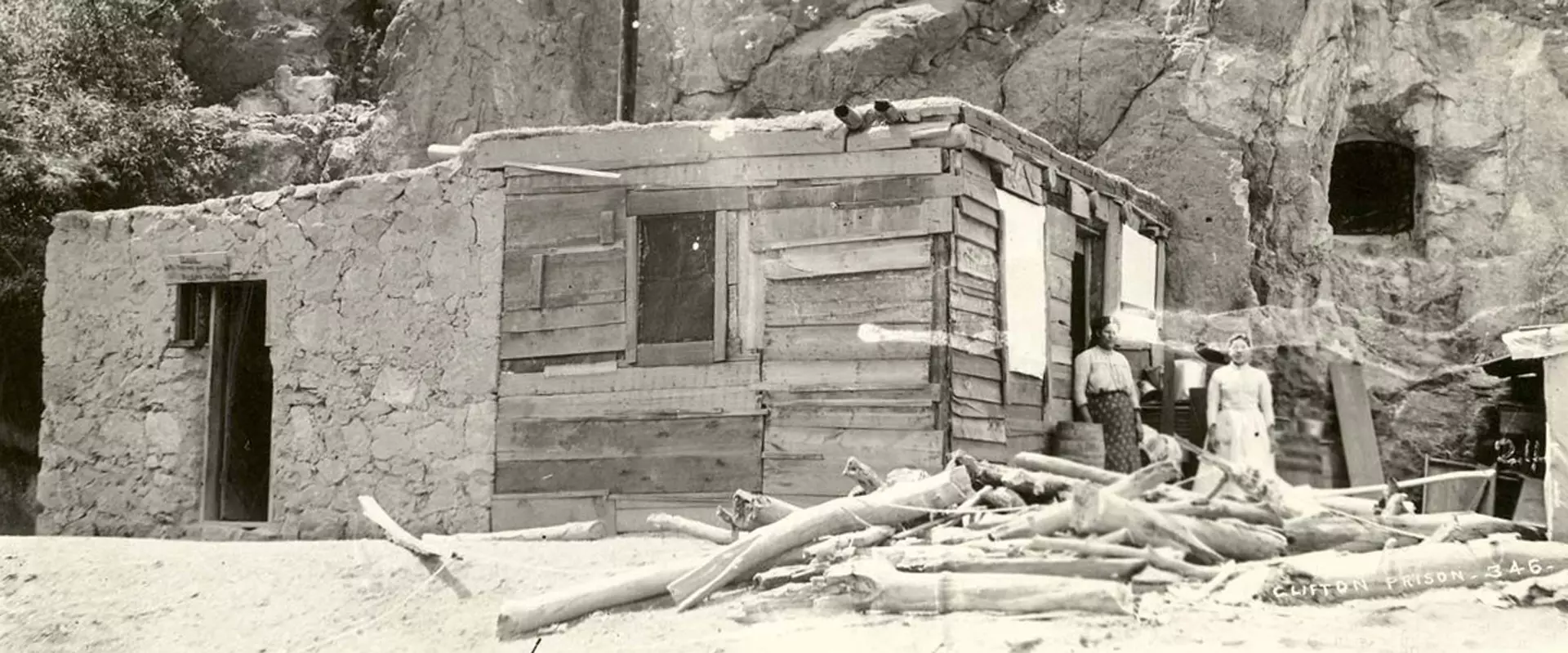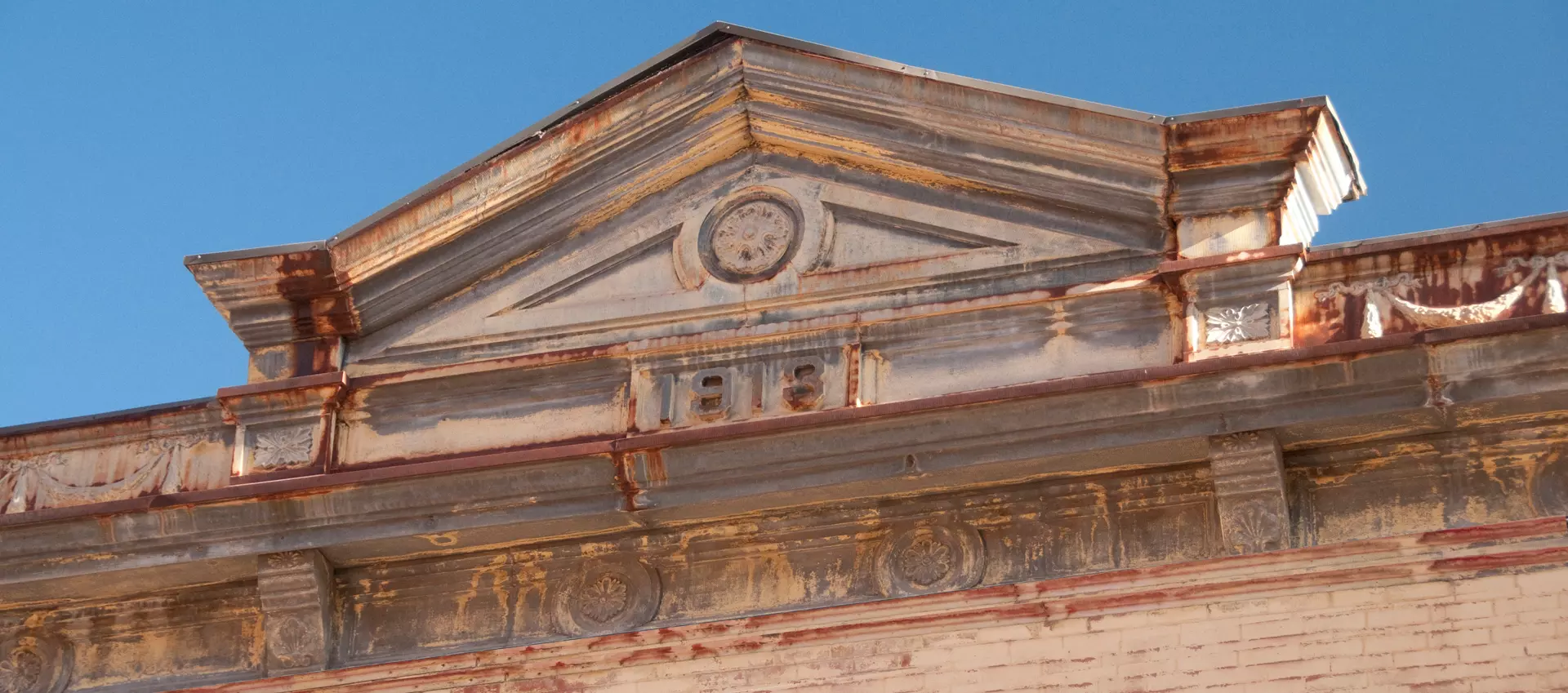A great place to begin your exploration of Clifton is at Greenlee Historical Museum. The museum has an impressive collection of Indian artifacts as well as turn-of-the-century clothing, housewares and old photographs. The mining exhibit includes a 1915 geological relief model of the area that shows the location of the old Morenci and Metcalf, now long since buried by the Freeport-McMoran copper mine.
One of the most interesting displays is the so-called "Eastside Murals". Before the Flood of 1983, the museum was located on the opposite side of the San Francisco River. When the adjacent building, the old H.A. Elliott home, was demolished, eight exquisitely hand-painted murals were discovered beneath the plastered walls. Apparently the rear room of the home served as a card or smoking room for friends of Mr. Elliott. A subsequent owner, Mr. Stanton, who was the high school principal, deemed them a bit too risqué and covered them with a thick coat of plaster. Were the murals painted by Mr. Elliott's guests, or by a mysterious local artist using the moniker, "Cui Bono" ("to whom is it a benefit")? The largest of the murals is more than 12 feet wide. They were reassembled and relocated to the museum under a grant from the Arizona Historical Society.
MoreTammie McWhinney
Greenlee Historical Museum
299 Chase Creek Street
928.865.3115
Hours:
Tuesdays, Thursdays and Saturdays from 2:00 to 4:30 p.m. Docent private openings and tours are available by calling (602) 865-3115. There is no admission charge.
Contact:
Greenlee County Historical Society
P.O. Box 1125
Clifton, AZ 85533
928-865-3115
greenleecountyHS74[at]gmail.com
Listed on the National Register of Historic Places, the Union Hall is a fine example of Territorial style architecture. Built in 1916, the hall is home to the famous mural commemorating the 1983-1986 United Steelworkers strike. Executed in dazzling color, the mural occupies the union hall's north wall and measures 40 feet wide by 10 feet tall.
Retired Dentist Jeff Gaskin bought the former Union Hall about 15 years ago, carefully renovating it to serve as a boarding house, gallery for his impressive collection of African art, and soon-to-be bed-and-breakfast.
MoreClifton Historic Union Hall
299 Chase Creek Street
Rooms:
$60/night
Lawrence "Jeff" Gaskin, 520-5089-3321
suriname09@gmail.com
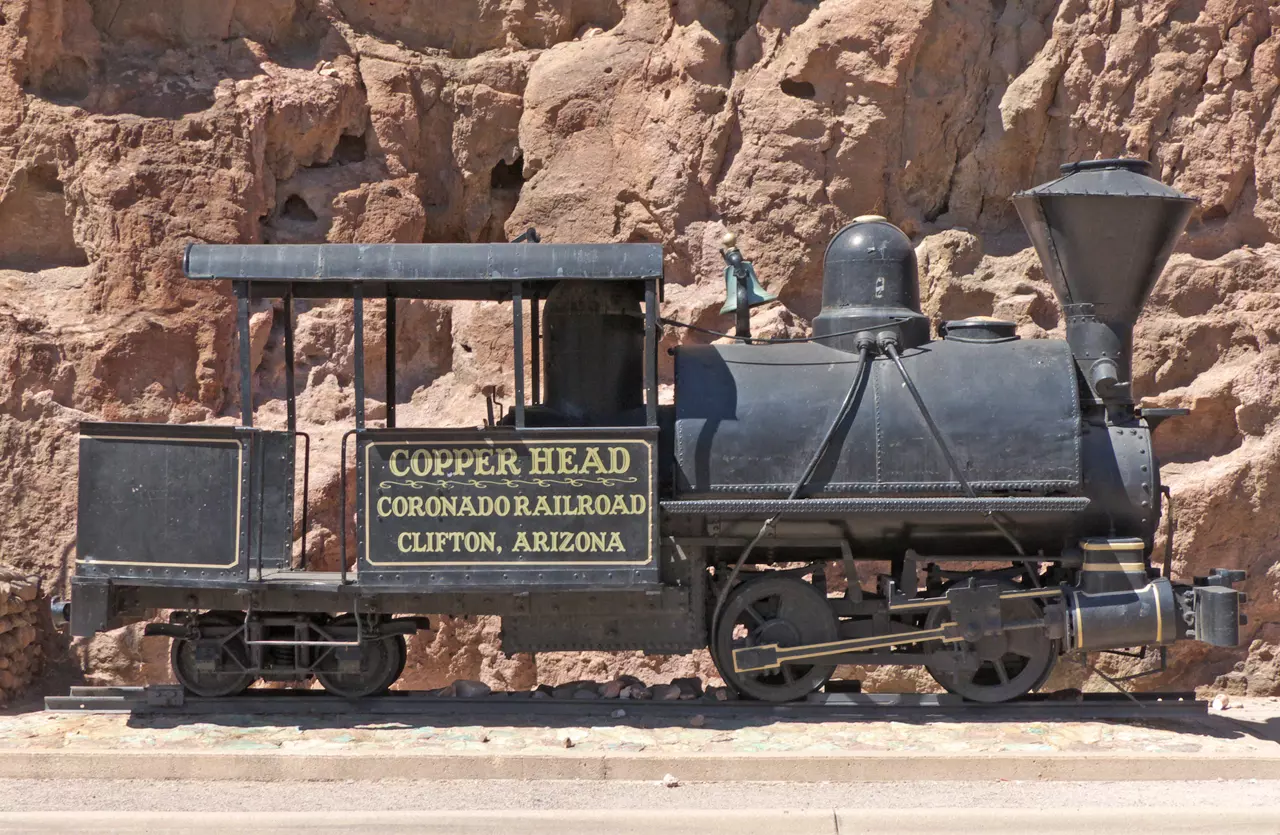
When the mines first opened, mules were used to haul ore cars from the smelter to the mines in the mountains above Clifton. The mules then rode down as passengers on the cars that delivered ore via gravity to the Chase Creek smelter. The ore was deposited in bins that are still visible today, behind the Circle K in Clifton. Once a narrow gauge railroad was completed from the smelter to the mine, the mules were replaced with "baby gauge" locomotives — so-called because they ran on 20-inch-wide track instead of the the standard 36-inch-wide track. One of these locomotives, nicknamed "The Copper Head," was saved from the scrap heap by Tom Sidebotham, a former engineer on the Coronado Railroad. He rebuilt the engine from parts and donated it to the town of Clifton in 1937. You'll find the engine in the center of town, next to the old Clifton jail.
Hours
You can visit the Old Copperhead Train any time.
The old jail is locked, but just give a call to the good folks at Clifton Town Hall, (928) 865-4146, and they'll send someone to unlock it for you.
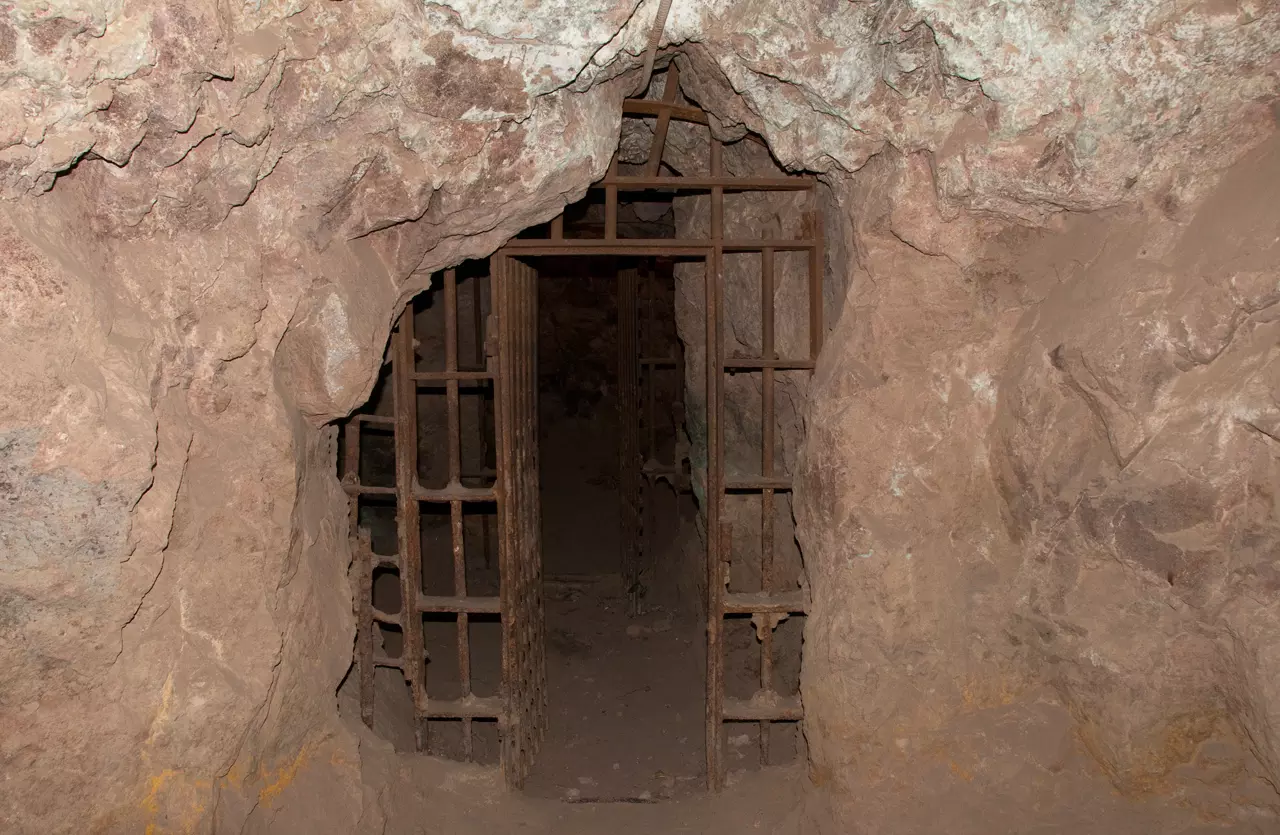
The Old Clifton Jail is one of Arizona's most notorious prisons. According to local legend, before the building of the jail, evildoers were punished by being sent to work in the mines. But many of them escaped before completing their sentences. So two local businessmen hired Margarito Varela, a stone cutter, to create an escape-proof jail by blasting a hole in a solid rock wall near the center of town. Tradition says that when Varela finished the job, he celebrated with a drinking spree than ended in shoot-out at the local dance hall. Since the dance hall proprietor was also the deputy sheriff, he arrested Varela, who thus became the first prisoner in his own jail.
When it was first built, the jail was higher than the town, but floods gradually raised the ground level even with the entrance to the jail. During the great flood of 1906, prisoners were evacuated by rope through a small window. The jail filled with mud and debris and was abandoned until 1929, when Mayor Peter Riley started a movement to restore the historic prison.
Clifton's downtown, the historic Chase Creek Street, is one of the state's best-preserved examples of Arizona Territorial Period architecture. Step back in time with a walking tour including tales of the larger-than-life characters who built these remarkable homes and businesses.
Take the Tour